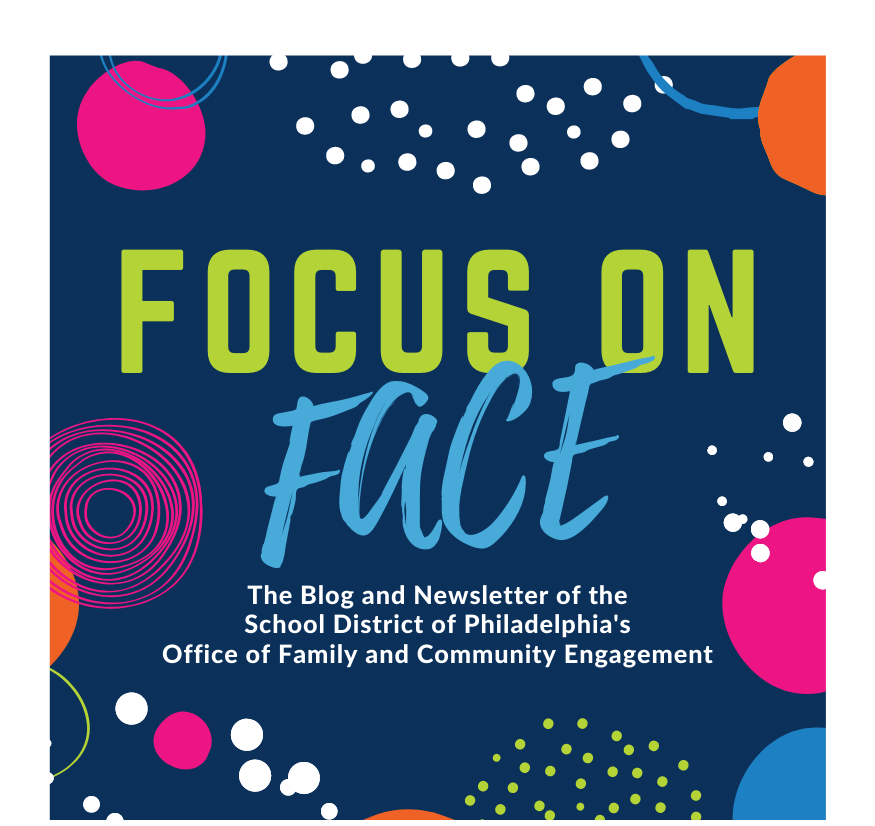
Usually in Focus on FACE, we try to discuss the positive things in our schools and in family engagement. But the reality is, for many people, school is not always positive and relationships between students, families, teachers, and administrators can be strained due to issues of school climate, safety, and culture. Many schools around the country, including schools in Philadelphia, have been taking steps over the past several years to relieve these issues through restorative practices.
The International Institute for Restorative Practices (IIRP) defines restorative practices as a “social science that studies how to build social capital and achieve social discipline through participatory learning and decision making.” IIRP explains that restorative practices has its roots in restorative justice, which, rather than simply punishing offenders, focuses on mending relationships and harm done to people—a practice that comes from indigenous communities around the world.
The most recent movement to implement restorative practices in schools has largely been a reaction to zero-tolerance policies that became popular in the 1990s, where the consequences of negative behaviors in school are well known and quick disciplinary action is taken. The outcome of this can be suspension, expulsion, or even a criminal record. Towards the end of its term, the Obama administration called for a change to these practices and policies, arguing they were outdated and citing studies that claimed that zero-tolerance disproportionately affect students of color.
Many school districts, including the School District of Philadelphia, have utilized restorative practices in their administrations and classrooms. Kendra Brooks, a restorative practitioner, activist, and parent of children in the District, argues that this practice can be critical for schools.
Ms. Brooks’s experience with restorative justice began in the Central Office at 440 N. Broad Street, when the founder of IIRP, Ted Wachtel, gave a free four day training. She immediately went back to the school where her children attended (and still attend), Edward Steel Elementary, to put her training to practice: she formed a leadership collective of kids who had challenging behavioral and disciplinary issues.
Ms. Brooks says this collective based around restorative practices was extremely beneficial for these kids, who were more engaged and felt more accountable for their behavior than in traditional, one-way disciplinary interventions. She tells a story of a young man who was selling popcorn with a friend for the Boy Scouts. When the friend was unexpectedly incarcerated and the money from the popcorn was gone, suddenly this young man was being accused of stealing money and teachers wanted him expelled.
“I talked to the principal and said, ‘Can we handle it?'” says Ms. Brooks. “It just so happened this young man was a part of our leadership collective. So we took his story to the circle, explained it to the rest of the leadership collective, and each one of those kids tried to help him problem solve: how to get the money back, what he had to do to make it right. [They] were willing to support him all the way to the end.”
“They didn’t want him to get kicked out of the leadership collective or the school,” Ms. Brooks continues. “To me, that was a success story…the kids figured it out, they problem solved the situation, he had to go to each one of those teachers, and for him, it was a process of healing; to be able to move on and be seen in a new light.”
Although she doesn’t currently have the time for direct service with students anymore, this is Brooks’s passion and she argues that more schools and school districts should take on restorative practices, although it is a big undertaking.
Ms. Brooks specifically cites Pittsburgh Public Schools, which received $3 million of funding in 2015 to work with IIRP to implement restorative practices in 22 schools. Pittsburgh Public Schools’ grant application called for “changing the dynamic between students and adult educators as well as the way students relate to one another, particularly in times of conflict” in order to “significantly lower suspension rates and involvement in the juvenile justice system.”
This must have paid off for the district, as their board just expanded the initiative at the beginning of this school year to twenty more schools, with plans for all schools to have restorative practices by Fall 2018.
Many people argue that all stakeholders in the school community must be involved and active participants for the strategy to be effective. Aaron Gerwer, co-principal at Science Leadership Academy, which is beginning to implement restorative practices, believes this is true especially in relation to family input.
“We want to adjust the understanding so that people get the appropriate consequence but also we have people who can have a conversation and a dialogue to try to learn from the experience and figure out a way forward,” said Mr. Gerwer. “And I think if parents aren’t totally clear about what ‘restorative practices’ means, they can see it as sort of soft discipline or lack of discipline, or that we’re not holding kids accountable in the way that they would like. So I think it’s important for every stakeholder to understand what’s going on and to have a voice in what that could look like.”
Ms. Brooks agrees, acknowledging the positive impact restorative practices can have on entire school communities.
“We did a Muffins with Moms at Steel and we talked about dreams,” Ms. Brooks remembers. “I had cloud paper and cloud stationary. It wasn’t for me, it was for them to see the school as a place to welcome parents, say, ‘we care about you’ and collectively, we should care about each other.”
A lot of time schools are suffering because there’s no sense of community,” Ms. Brooks continues. “How can we build more community in those spaces? I think restorative principles and grounding school communities in that is very helpful. It can’t be just, ‘do a training’—it’s about changing culture.”
Sources:
- https://www.iirp.edu/what-we-do/what-is-restorative-practices/defining-restorative
- https://www.edutopia.org/blog/restorative-justice-tips-for-schools-fania-davis
- https://restorativejustice.org.uk/restorative-practice-schools
- https://www.pbs.org/newshour/nation/obama-administration-recommends-ending-zero-tolerance-policies-in-schools
- https://www.pghschools.org/site/Default.aspxPageType=3&DomainID=4&PageID=1&ViewID=6446ee88-d30c-497e-9316-3f8874b3e108&FlexDataID=12752

